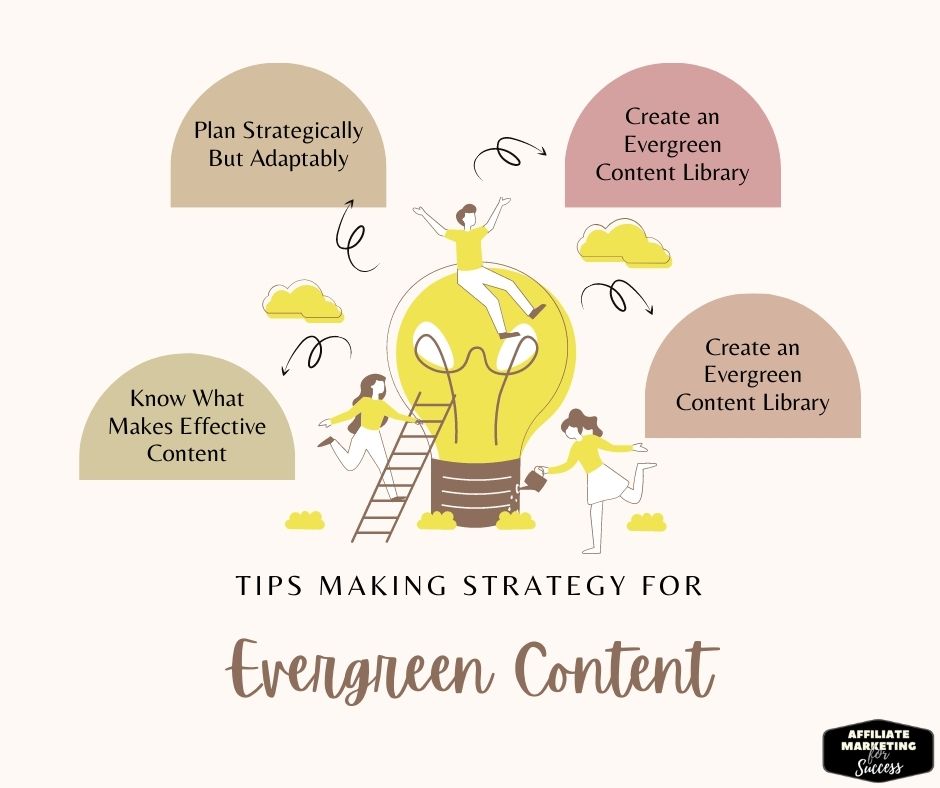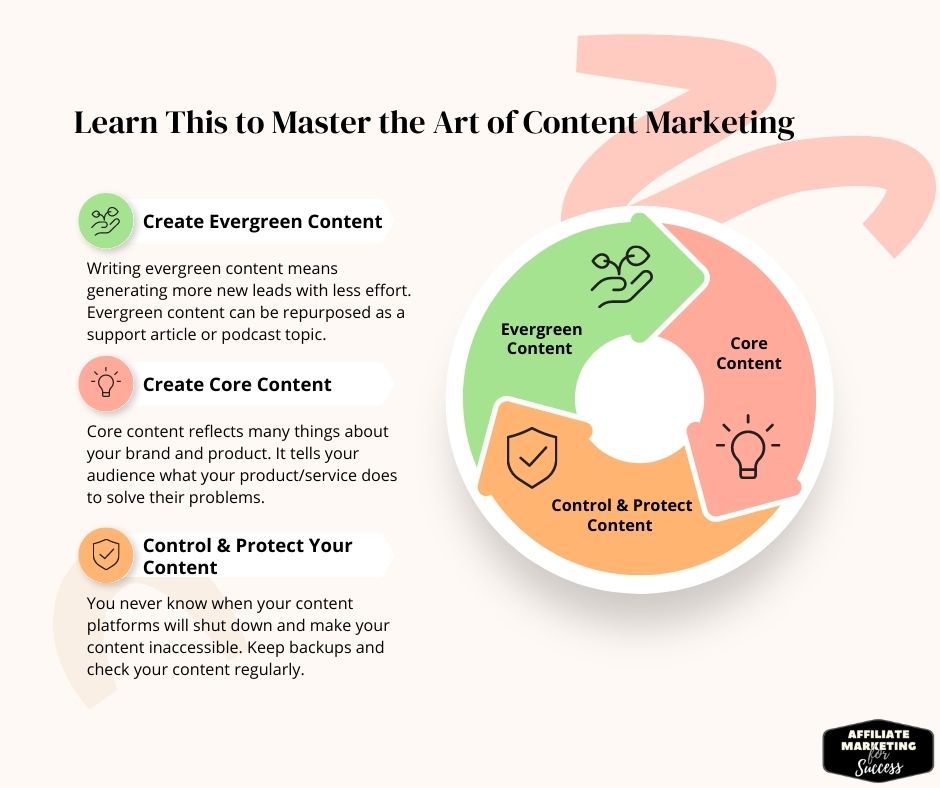Creating Evergreen Content: A Comprehensive Guide
Learn how to create evergreen content is an important part of your content strategy. Check out these tips to create evergreen content that lasts forever.
Evergreen content is a term used to describe any piece of content that remains relevant and useful months or years after it was created. It’s different from news, which goes stale within a few days. Evergreen content can be text articles, videos, infographics or even images—anything you can repeatedly use to help market your business. But how do you create evergreen content? And what does an evergreen piece look like? In this article, we’ll cover everything from the basics of creating effective evergreen content to some advanced techniques for writing compelling headlines they practically write themselves!
What is Evergreen Content?

Evergreen content is information that is still useful and interesting to readers even after a long time has passed. It is the opposite of news-based or seasonal content, which only has a short shelf life and quickly becomes irrelevant. Evergreen content can be made in many ways, like blog posts, articles, videos, infographics, and how-to guides.
Why is Content Marketing Effective?

Content marketing is a strategy that involves making and sharing useful, relevant, and consistent content to attract and keep a target audience and, in the end, get customers to do something that makes money. This can take the form of blog posts, infographics, videos, or other types of media and can be an effective way to establish your brand as an authority in your industry and build trust with your target audience.
Content marketing has also been shown to bring in leads and sales and improve search engine rankings, which leads to more people finding your website on their own.
Why is evergreen content important?

Evergreen content is important for several reasons. Firstly, it provides a constant source of organic traffic to your website. This is because evergreen content is always useful and keeps bringing in visitors. Second, evergreen content helps your brand become known as an expert in its field, which makes it easier to bring in new customers. Third, it gives your audience a consistent way to get information, which helps build trust and loyalty.
Examples of evergreen content
Examples of evergreen content include:
- How-to guides and tutorials
- List posts
- In-depth articles on industry topics
- Infographics
- Product reviews
- Industry reports
Video content. For example, a guide on how to make the perfect cup of coffee or a list of the best hiking trails in a specific region
How to create evergreen content
To create evergreen content, you need to follow a few steps:
Do keyword research

Keyword research is the first step to creating evergreen content. It’s important because it helps you figure out what people are searching for, allowing you to create content that answers those questions.
Keyword research can be done manually or with tools like Google’s Keyword Planner tool. Either way, this step involves understanding your target audience and using keywords they would likely use when searching online for solutions related to their problems or interests (in this case: “how do I create evergreen content?”).
Write for your target audience.
To create evergreen content, you must write with your target audience in mind. You should be able to articulate who this person is and what they care about so that every piece of writing is relevant and exciting to them. This doesn’t mean that all readers will share the same interests–the key is finding out precisely what makes one particular group tick (and then giving them more of it).
Avoid newsjacking and topical content.
If you’re a news junkie and love to keep up with current events, then you’ve probably heard of the term “newsjacking.” It’s when a brand or business jumps on top of an existing news story, either piggyback off of its popularity or capitalizing on its publicity. Newsjacking is excellent for getting quick exposure and gaining traction quickly–but it’s not necessarily evergreen content.
Newsjacking can be effective in the short term (especially if you’re offering something relevant or helpful). Still, if your goal is a long-term engagement, then topicality isn’t always ideal for creating lasting impressions with readership. Instead of focusing on being topical and trying to make evergreen content from newsworthy events happening now (like Hurricane Irma), focus on creating timeless pieces that are relevant year after year — like our guide here!
Find out what your audience wants to know
Before you start creating evergreen content, it’s important to understand what your target audience wants to know. This can be done in several ways, like through surveys, focus groups, and keyword research. Understanding your audience’s needs and wants will help you create content that is both relevant and valuable to them.
Create content that ties into the keyword

Once you clearly understand what your audience wants to know, you need to create content that ties into the keyword or phrase they are searching for. This will help search engines rank your content higher and make it easier for your target audience to find.
Revisit your content to refresh after publishing
After you publish your content, it’s important to check back on it from time to time and update it as needed. This will help ensure that your content remains relevant and up-to-date.
Choose your topics and make sure they qualify as green content
When choosing topics for your evergreen content, it is important to ensure they have long-lasting relevance and are not tied to any specific event or date.
Conduct research

Before you start writing your evergreen content, it is important to research the topic you have chosen. This will help you understand the subject and create informative and accurate content.
Make it helpful and practical
Make it helpful. The first step in making content that will last forever is to make sure that your audience can use what you’re giving them. Make sure the information you provide is practical and actionable, whether it’s in a guide or an infographic, so readers know exactly how to apply it in their lives.
Make it memorable. One of the biggest reasons people share content online is because they think others will find it interesting or relevant enough for them to pass along, so give them something worth sharing! Your goal should be for people to remember how much value they got from reading your article (and then share it). This means keeping things short and sweet: no one wants to commit more than two minutes worth of attention span when deciding whether or not something deserves their time investment; if possible, try not even including any links within posts themselves so readers aren’t distracted by external links while trying out new ideas/methods themselves later down the line once they’ve finished digesting everything else within each post itself first before moving onto anything else outside its boundaries.”
Make it easy to understand and take action on
You want readers to be able to understand and act on your content. Use clear, simple language that’s easy for them to read and understand. Make it easy for them by using bullet points, numbered lists and diagrams where appropriate.
- Break up the text with subheadings so readers can skip directly to the information they need without reading through everything else first.
- Use images, charts or diagrams where possible (and relevant) – these will help break up the text and make your content more visually appealing too!
Make it easy to navigate
To make your content easy to navigate, you should use headings and subheadings. You can also use bullet points and numbered lists to break up the text. Images are another way to make it easier for readers to get through your article by giving them something visually interesting to focus on while they read. Finally, provide a table of contents at the beginning of each post so that readers know what’s coming next in case they want more information about one particular topic or section of an article instead of reading through everything at once (which can be overwhelming).
Give it an irresistible headline

The headline is the first thing readers will see and it’s an important part of your content strategy. It should be short, snappy, and catchy–but also relevant to what you’re writing about. You can use several different types of headlines depending on what you want to achieve:
- Headline: The title should be written in active voice (i.e., “How I Improved My Writing Skills” instead of “How My Writing Skills Were Improved”) because it makes the article sound more authoritative and persuasive when read aloud or spoken aloud as opposed to the passive voice which sounds less authoritative and persuasive when spoken aloud or heard by others who may not know much about our business field yet but might still become customers later on down the road due to our great reputation among peers within this industry space where everyone knows each other’s name before meeting face-to-face!
Make sure the URL is easily understood and descriptive of the content.
Once you’ve decided on your topic and written a draft, it’s time to think about the URL. The URL is what people will see when they search for your content on Google, so it must contain keywords related to your topic. You also want a short URL that won’t be too long or difficult to type out, especially if people share links through social media or email rather than typing them into their browser address bar (since most URLs are auto-filled by browsers).
The best way of making sure this happens? Use words from both the title and meta description tags in the URL itself!
Give it a meta description that elicits a click-through.
The meta description is the snippet of text that appears below your content in search results. It’s one of the most important parts of your page, because it’s what users see first and often decide whether or not to click on your link.
The meta description should be relevant to the content on which it appears and should be written for people, not for search engines. The ideal length is 150-160 characters (including spaces).
Optimize the content for keywords and search engines
Now that you’ve written your content, it’s time to make sure it will be found in search engines.
- Use keywords in the title and subheadings of your article. Keywords should make sense for what you’re writing about, but also be specific enough so that people looking for information on those topics will find your page when they search for those terms. For example, if I was writing an article about how to install drywall in a bathroom (which I am), I would want my title tag to include both “drywall” and “bathroom.”
- Use keywords in the URL of your article or blog post–this is especially important if you have multiple pages with similar content on one site because they’ll each need their own unique URL containing relevant keywords so that Google knows which one(s) go together when crawling through them all at once later on down the line when searching through thousands upon thousands of articles across hundreds upon hundreds of domains all over the internet!
Add appropriate images and visuals

Images are a great way to break up text and illustrate your topic. They’re also good for attracting attention, particularly if you have an eye-catching image that’s relevant to the content. For example, if you’re writing about how to make a sandwich in the morning, using an image of someone making their own sandwich can help break up some of the text and illustrate what you’re talking about.
Images should also be relevant to your target audience–if they don’t understand something in an image, they won’t be able to get any value out of it! To make sure this doesn’t happen:
- Use easy images for people who aren’t visual learners (like me). If someone like me can look at an image and immediately understand what it means without having someone explain it first, then there’s no reason why anyone else wouldn’t understand either!
Include visual cues (e.g., color) to guide readers through the content.
One of the best ways to make your content more engaging is by using visual cues (e.g., color) to guide readers through the content.
For example, you could use different colors in your headers to highlight important information or separate sections of your content. You could also use color to highlight a call-to-action button so that people know exactly what action to take when reading your post.
Choose appropriate and representative visuals
Visuals are an important part of any content, and choosing visuals that are both appropriate and representative of your content is important. This will help make your content more interesting and appealing to the people you want to read it.
Create content in line with your brand
When creating evergreen content, it is important to make sure that it is in line with your brand and reflects your values, tone, and style. This will help your brand become known as an authority in your field and build trust with the people you want to buy from you.
Update yearly
Update your content yearly. The best way to keep your content fresh and relevant is by updating it yearly. This will ensure that you’re always providing your audience with the most up-to-date information, examples, statistics, and images so they won’t get bored rereading the same old thing
You can add an extra paragraph or two on top of what was written in the previous year’s version of the article (or section if it was split into multiple pieces). You could also add a few new images or videos depending on what topic area you’re writing about.
Optimize each piece of content for search engines and social media channels
Optimizing each piece of content for search engines and social media channels is essential when creating your evergreen content. This means using keywords in your title, description, and tags; adding a relevant image to each piece of content; adding a link to your website; and using various social media channels.
How do you come up with ideas for evergreen content?
Here are four important tips from a professional digital marketer with years of experience making evergreen content that people will always want to read:
1. Get ideas from current events: Keep an eye out for stories, reports, news items, or unique insights about topics related to your industry that could be presented in a way that isn’t dated or has a short shelf life because trends change quickly.
2. Tweak the classics: Take well-known stories (such as proverbs) and twist them slightly so they apply uniquely to your business audience—this can be entertaining and educational simultaneously!
3. Use customer feedback: Talk to customers directly or ask prospects what kind of content would help them decide what to buy. This is especially helpful if it’s something they deal with often enough that good advice on how to handle it would help them a lot in the future.
4. Use the knowledge of influential people: Look up opinion leaders in your field who may have written influential pieces on certain topics. Use the ideas these experts give you as a starting point, then add new angles or perspectives that offer fresh information and insight from a different angle that has never been thought of before!
Discover the best evergreen content types and topics
Having trouble coming up with content that will stand out in the crowded search engine rankings? Think about making content that will always be useful to reach your target audience and do well with Google. Professional marketers experienced in digital marketing know the best types and topics of evergreen content that can help you rank high on established search engines like Google.
When writing evergreen content for an online presence, it’s important to create useful, interesting content that will last for a long time. From crafting useful guides about trending products or services to generating well-researched opinion pieces on industry hot topics; discovering which type of topic works best for your business requires research from knowledgeable professionals in digital marketing who understand how to establish successful plans against ever-changing algorithms so one’s website can remain competitively visible within popular search engine results pages (SERPs).
The Importance of Evergreen Content for SEO

Creating evergreen content has a number of benefits for SEO. First, it brings a steady flow of free traffic to your website as people keep looking for and finding your content. Second, it helps build a strong foundation of high-quality content on your site, which search engines reward with better rankings. Finally, evergreen content can also help you build a reputation as an expert in your field, which can lead to more opportunities for link building and brand recognition.
Steps to Creating Evergreen Content that Dominates the Search Rankings
Here are the steps to create evergreen content that will rank well in search engines and drive organic traffic to your website.
Steps to create evergreen content:
- Conduct keyword research with tools like Google Keyword Planner.
- Create a compelling title with target keyword included.
- Write high-quality, detailed paragraphs that cover the topic in-depth.
- Use headings and subheadings for easy reading and better search engine understanding.
- Optimize for readability with short paragraphs, bullet points, and images.
- Include relevant images and videos with optimized file names and alt tags.
- Promote content by sharing on social media, reaching out for links, and potentially running paid advertising.
How to promote your own evergreen content
If you want to rank high on Google, make sure your content is evergreen, uses the same keywords, and is optimized for search engines. By understanding the basics of SEO, you can craft a professional tone in all your posts to ensure they are seen by the right people and rank higher than competing pages. Also, promote these pieces regularly through multiple channels, like social media or press releases, to keep bringing attention to them over a long period. This will help customers see your content more than once and interact with it more often.
Use evergreen content to get known online and bring more people to your website at the same time. To keep content fresh without having to continuously create new topics, craft stories that remain relevant for long periods of time yet still capture readers’ interests effectively when promoted properly using marketing strategies like email campaigns or organic outreach like link building tactics across other related websites in order achieve higher rankings in Google searches throughout its lifetime
How to update your own evergreen content
Evergreen content is important for SEO, but if you want your pages to rank high on Google, it needs to be updated and optimized often. Find out how professional marketers keep their evergreen content fresh so that it stays at the top of search engine results and gets the most attention. Learn important techniques like keyword research, backlinking strategies, and meta-tag optimization so your website stands out from the rest and can reach as many people as possible.
Publishing great quality Evergreen content isn’t enough to raise your page’s ranking on Google—regular updating is a must! Find out how experienced marketers use simple but effective techniques, like researching keywords that fit with industry trends and putting smart linking structures on different pages, which can make all the difference when trying to move up in SERPs (Search Engine Results Pages). Get ready for a boost in organic traffic today!
References
The Beginner’s Guide to Evergreen Content – Digital Marketing Institute
Creating evergreen content should be an ongoing goal for your business, so it’s likely you’ll use most of the formats at some time. 1. Original Research 2. Successful Case Studies …
How to Create Evergreen Content Right From the Start – Neil Patel
7 Tips for Creating Evergreen Content Right From the Start To be clear, not all your content needs to be evergreen. Your audience wants to know you’ve got your finger …
How to Create Evergreen Content That Generates Traffic to Your Site
Now that we’ve established how critical evergreen content is for your digital marketing strategy, it’s time to learn the ropes of creating one that can be impactful for years. Follow …
What Evergreen Content Is and How to Create it – Business News Daily
Evergreen content is an important part of any content marketing strategy. Here’s how to create it. Evergreen content is relevant for a long time and provides value to your audience …
How to Create Evergreen Content (And Keep It That Way)
Next, we’ll go into the steps of developing evergreen content and how to ensure it stays this way. 1. Make a Top 50 List of Questions and Ideas What are …
Your Guide To Creating Evergreen Content – Forbes
2. Check Google Trends. If you’re undecided about whether a topic is evergreen, search Google Trends for the keyword. If the “Interest over time” chart is a downward slope or …
How To Create and Maintain Evergreen Content – SocialPilot
How To Create Your Own Evergreen Content The real-easy step here and the most apparent recommendation, at first sight, is to understand carefully; Google is aiming at users, not marketers. …
How To Create Evergreen Content: Step-By-Step Guide
How to create evergreen content: 5 essential steps To simplify the whole process, we’ve broken it down into a framework consisting of 5 major steps.
I’m Alexios Papaioannou, an experienced affiliate marketer and content creator. With a decade of expertise, I excel in crafting engaging blog posts to boost your brand. My love for running fuels my creativity. Let’s create exceptional content together!







